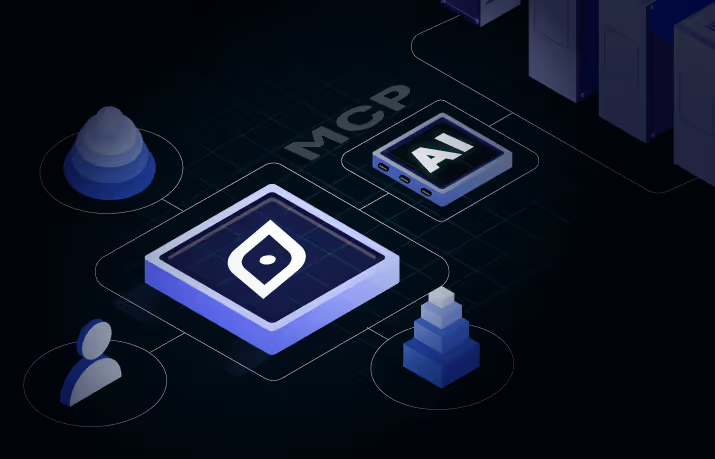Enhance Your Talent Acquisition Strategies with Multi-Dimensional Global Labor Market Data
You’re on a hunt for niche, emerging (scarce?) talent—and so are your peers. To stay competitive, talent acquisition leaders from large enterprises need a 360-degree view of the global labor market cutting across skills, roles, talent demand and supply, and global talent acquisition strategies and trends. But manually compiling and analyzing such datapoints from multiple, diverse sources could be time-taking, cumbersome and often error-prone.
Using Global Talent Insights to Power Predictive Talent Acquisition Strategies
To stay ahead of their peers/competitors, Talent Acquisition leaders should follow a proactive, forward-looking approach to talent acquisition strategies by not just accessing the multidimensional labor market data – but also turning this data into contextual, actionable insights.
For example, by analyzing the available global talent pool, talent acquisition teams can identify talent distribution, cost modelling, top employers, attrition trends, supply from universities, peer talent strategy, diversity data etc – eventually migrating to a skills-based, future-ready workforce.
With such AI-driven insights, talent acquisition teams gain a powerful advantage: they can quickly engage, onboard and retain the candidates who are most appropriate for support the current and upcoming business goals of the organization. This enables the talent acquisition strategies to align well with the larger organizational initiatives.
Let’s dive deeper into how AI enhances 3 key aspects of talent acquisition strategies – Location Planning, Compensation Benchmarks and Peer Insights
Talent Distribution Analysis and Strategic Location Planning
Data-driven insights empower informed talent acquisition strategies and decisions on location planning by identifying talent hotspots for specific skills and evaluating the cost-effectiveness of various locations. They provide a clear understanding of talent landscape in the target locations, do talent cost modelling, and roll out talent acquisition strategies that align with the organisational objectives.
Imagine a tech company looking to establish a new data engineering hub. By analyzing talent data, they identify that Austin, TX has an existing pool of skilled engineers, while Phoenix, AZ offers lower operational costs but has fewer professionals with the same experience levels/skillsets. Also, factors like the inclination of Austin’s workforce to hybrid working models combined with the smaller talent pool at Phoenix, strengthen the case for Austin as a relatively better location to set up a hub. This data-driven insight guides the company to choose Austin over Phoenix, optimizing for talent access and flexibility.
Skills-Based Workforce Planning
Organizations are constantly adapting to new talent acquisition strategies to remain competitive. New, mission-critical business initiatives, such as developing a new product, expanding into a new market, or implementing a transformative technology, often necessitate the creation of entirely new workloads.
For example, a financial services firm wants to launch a new robo-advisor platform to attract younger, tech-savvy investors. These talent acquisition strategies aim to increase market share and reduce reliance on traditional, higher-cost advisory services.
Talent acquisition strategies and workloads Powering the Initiative: Developing and launching this robo-advisor requires several key workloads:
- Software Development: Building the platform itself, encompassing user interface design, algorithm development, security implementation, and ongoing refinement of investment recommendation algorithms.
- Marketing: Promoting the platform to the target demographic.
- Technical Support: Addressing user inquiries and resolving technical issues.
- Compliance and Risk Management: Ensuring adherence to regulatory requirements and managing associated risks.
- Financial Analysis and Modeling: Developing and maintaining the financial models underpinning the robo-advisor’s recommendations.
Skills Feeding the Workloads (Skills-Based Workforce Planning): To effectively support these workloads, the firm needs talent acquisition strategies catering to specific skills:
- Software Development: Expertise in Python, Java, cloud computing (AWS, Azure, GCP), cybersecurity, and relevant frameworks/libraries (e.g., React, Angular, Spring).
- Data Science: Proficiency in machine learning, statistical modeling, financial analysis, and time series analysis.
- Marketing: Digital marketing expertise, content creation, social media management, SEO/SEM optimization, and performance marketing analytics.
- Customer Support: Excellent communication skills, technical aptitude, experience with financial products, and problem-solving abilities.
- Compliance and Risk Management: Knowledge of financial regulations, risk assessment methodologies, and compliance frameworks.
- Financial Analysis and Modeling: Expertise in financial modeling, investment analysis, portfolio management, and relevant software tools.
Strategic Advantage of Skills-Based Planning: By analyzing these skill requirements, the firm can develop targeted talent acquisition strategies. This approach allows the firm to
- Optimize Resource Allocation: Ensure the right skills are available at the right time.
- Enhance Agility and Scalability: Adapt quickly to changing market conditions and scale the platform efficiently.
- Gain a Competitive Edge: Develop a high-performing team capable of delivering innovative solutions.
Peer Talent Strategy Analysis
Access to multi-dimensional labor data enables peer talent strategy analysis– by providing insights into competitor hiring trends, skill demand patterns, top talent acquisition strategies, location, and emerging roles, etc. This intelligence helps organizations stay aware of industry-specific talent movements, ensuring they remain agile and responsive to shifting market demands.
For example, a healthcare organization notices a competitor ramping up hiring for digital health roles in Denver, CO. When the company combines this data with insights on emerging telehealth roles, talent acquisition strategies, and growing skill demands, it realizes the competitor’s move signals a strategic shift toward digital solutions. By leveraging these insights, they adapt their own hiring to attract digital health specialists, staying ahead in the fast-evolving healthcare market in Denver.
Conclusion
As enterprises evolve and new-age roles emerge, the gap between talent supply and demand has intensified. AI-driven analysis of labor market data allows talent acquisition leaders to move beyond traditional talent acquisition strategies and embrace skills-based recruitment.
The future of talent acquisition is powered by AI platforms that continuously analyze labor market dynamics, offering real-time insights into emerging skills, talent availability, and compensation trends. This enables companies to build smarter talent acquisition strategies—securing specialized talent ahead of the competition and fostering long-term growth.










.svg)
















.svg)





.svg)





.svg)
